When you think of Japan, what comes to mind? Overpacked trains and cramped stores? Stone steps covered in moss leading to a temple in a bamboo forest? An inaccessible destination? While those scenes do describe some parts of Japan, they are far from the whole picture.
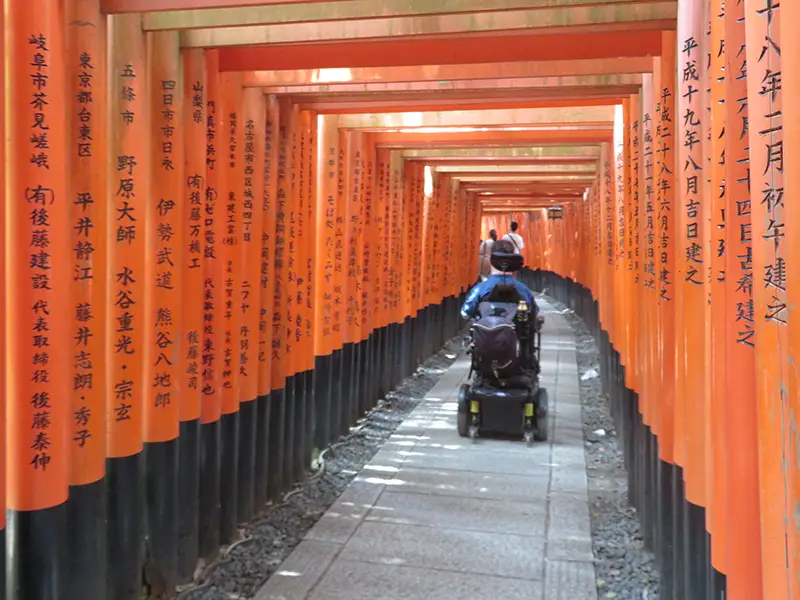
I have been traveling the streets of Japan in my power wheelchair for over 15 years and have enjoyed watching the country become more and more accessible. But there are still some challenges for travelers with disabilities. Here are a few things you may want to know before you jump on a plane.
Plan Ahead
Preparation is key when traveling to Japan with a wheelchair. There are many websites dedicated to travel in Japan, but almost none take accessibility into consideration. The same can be true for most tourist attractions and hotels. Get to know some basics and use tools like Google Maps' Street View and YouTube to visit the places you wan to go before you go! As a wheelchair user getting on an airplane, you should also prepare for the possibility of something going wrong with your only method of getting around. I highly suggest visitors pay attention to voltage differences to ensure your battery charger works as intended, bringing a tool kit with some basic tools, and asking your provider for the contact information of a local repair shop in Japan.
Finding a Place to Stay
Until recently, Japanese hotels with more than 50 rooms were only mandated to offer one wheelchair-accessible room, regardless of the total number of rooms, leading to a scarcity of such accommodations. Now, new hotels with over 50 rooms must make at least 1% of their rooms wheelchair accessible.
Further complicating the situation is the booking process for accessible rooms, which often requires direct communication with the hotel, as these rooms are not typically available for online reservation. This can be challenging, especially when hotel websites do not provide an email address, necessitating phone calls or the assistance of a travel agent for bookings. Alternatively, after booking through a site like Booking.com it is possible to contact the hotel within the booking site and ask your reservation be changed to an accessible room.
I highly recommend you begin your hotel search well before your trip. The Accessible Japan website, which offers a database of accessible hotel rooms, can be a valuable resource in your planning.
Getting Around
Although navigating the complex subway and train system might seem daunting at first glance, asking to deciphering a plate of spaghetti, there are beneficial services in place for people with accessibility needs.
For those using wheelchairs or with visual impairments, the process begins right after purchasing your ticket. Approach the staff near the ticket barriers and inform them of your destination. Shortly after, a staff member will assist you by guiding you through the station to your train. They will help visually impaired passengers to secure a seat, and will provide a portable ramp for wheelchair users to board easily.
The assistance doesn't stop there. Departure station staff will communicate with your arrival station or transfer point to ensure that someone is ready to assist you upon your arrival, making your journey smoother and alleviating concerns about navigating the complex system.
Regulations require accessible routes in stations with over 3,000 daily users, resulting in more than 95% of Tokyo's train stations being wheelchair-friendly, with similar accessibility in Osaka and Kyoto. Buses in these cities are also equipped for accessibility.
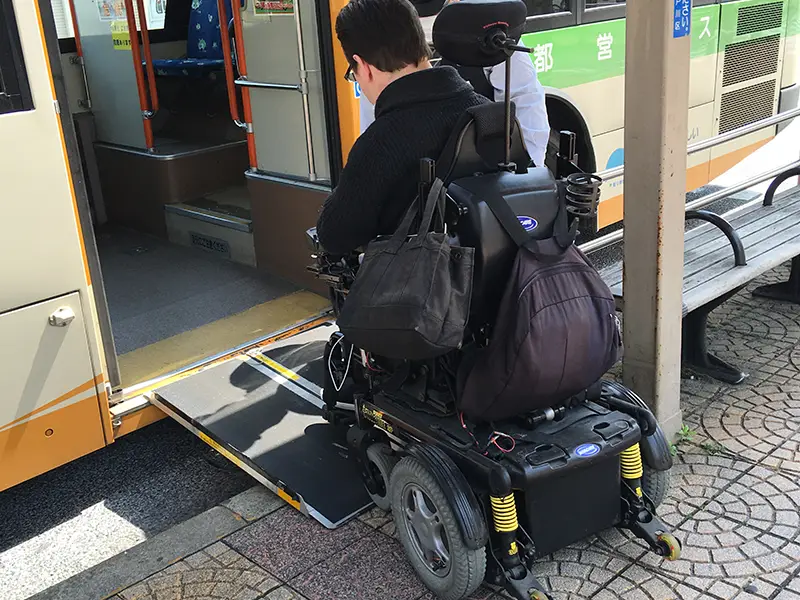
However, there are a few caveats to keep in mind. Elevators, often added long after the original construction of the stations, can be hard to find and may require taking a detour. Additionally, venturing outside major urban areas might present challenges, as infrastructure tends to be older and less accommodating for accessibility.
Seeing the Sights
Tourist destinations are increasingly adapting to accommodate wheelchair users. Even cultural heritage sites, where preserving aesthetic integrity is crucial, are adapting. This might result in minor inconveniences, such as the need to use less visible side entrances. However, accessibility is often seamlessly integrated into the site's design, with ramps constructed from weathered wood or elevators camouflaged as traditional temple structures. These adaptations might not always be immediately evident, so it's advisable to consult with staff or security personnel for guidance.
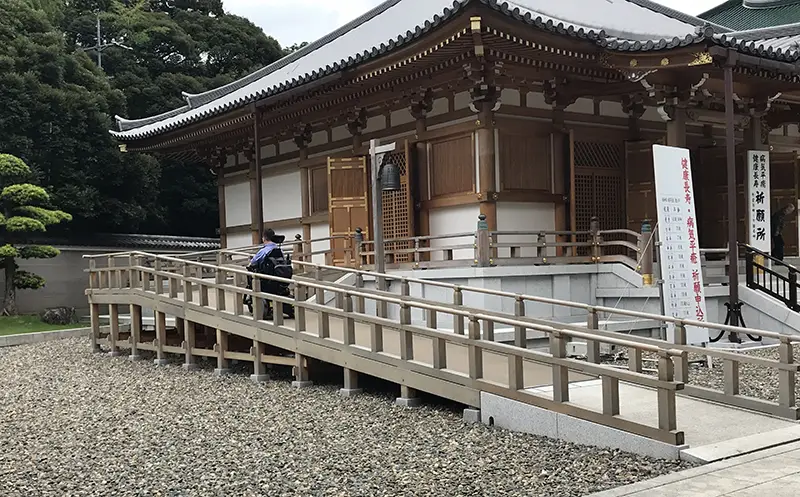
Most of these locations are equipped with several clean, wheelchair-friendly restrooms, which are usually indicated on site maps. Due to Japan's mountainous terrain it's important to note that some sites like temples nestled on steep slopes may remain challenging to access for wheelchair users.
Odds and Ends
I could write a book about accessible travel in Japan (actually, I did write a guidebook for Tokyo!), but space is limited, so here are a few other tips.
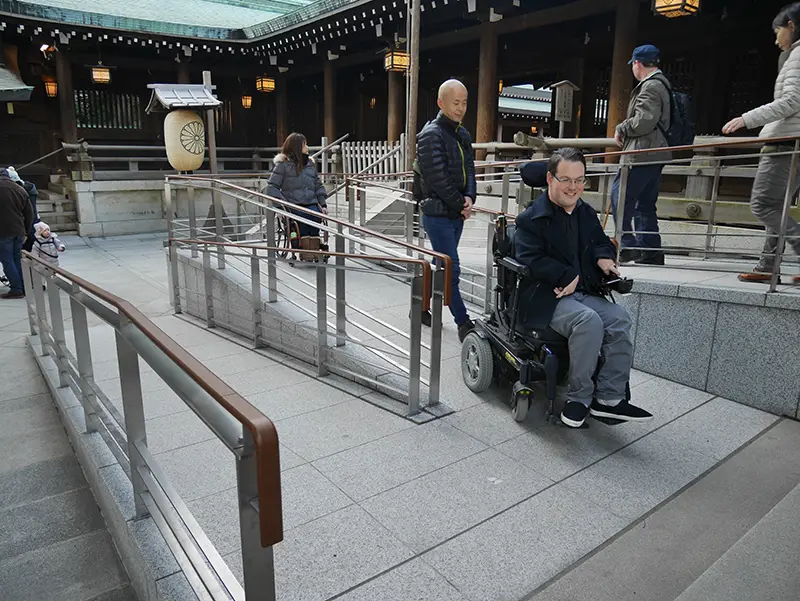
Unfortunately, restaurants are hit-or-miss and many Japanese-style restaurants are rendered inaccessible by steps at the entrance or very small interiors. The safest place to look for accessible restaurants is in shopping centers or department stores.
Throughout Japan, multipurpose toilets are located near the men's and women's toilets. They are often spacious, feature handrails, facilities for those with ostomate bags, and sometimes even a full-sized changing table. Almost every train station has at least one, as do shopping centers, attractions, museums, many tourist destinations, and even local parks. Special access keys are not required.
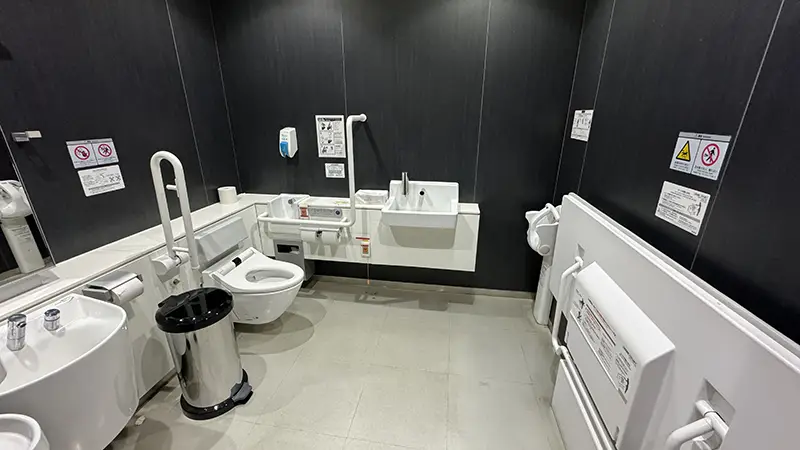
Conclusion
Visiting Japan with a wheelchair is not only possible, but can be a highly rewarding experience. With the right preparation and resources, you can explore the beauty and diversity of Japan. For more detailed information, tips, and support, visit Accessible Japan, consider purchasing our guidebook to Tokyo to carry with you, and join the tabifolk Japan group to ask for personalized advice from a vibrant community of travelers with disabilities.
About the Author
Josh Grisdale, 43, is originally from Toronto, Canada and became interested in Japan in high school. He refused to let his disability stop him from following his dream to live and work in Japan. He moved to Tokyo in 2007, and became a naturalized citizen in 2016. In addition to his role as manager in the marketing department for Azalee Group in Tokyo, he travels around Japan and reports on accessibility of popular tourist attractions for his website, Accessible Japan, to encourage people with disabilities to come and visit the country he loves. He serves on an accessibility review board on transportation with MLITT and has been on judging panels for several Japan Tourism Agency accessible tourism grants as well as the Japan Travel Awards. He has also served on local accessibility committees and was selected by Edogawa City to be a torchbearer for the Tokyo Olympics and Paralympics. He also founded the accessible travel community, tabifolk.
Most of the stories here on LiveQuickie.com were submitted by readers. Do you have a story to tell? We'd love to hear it. Submit your story here.